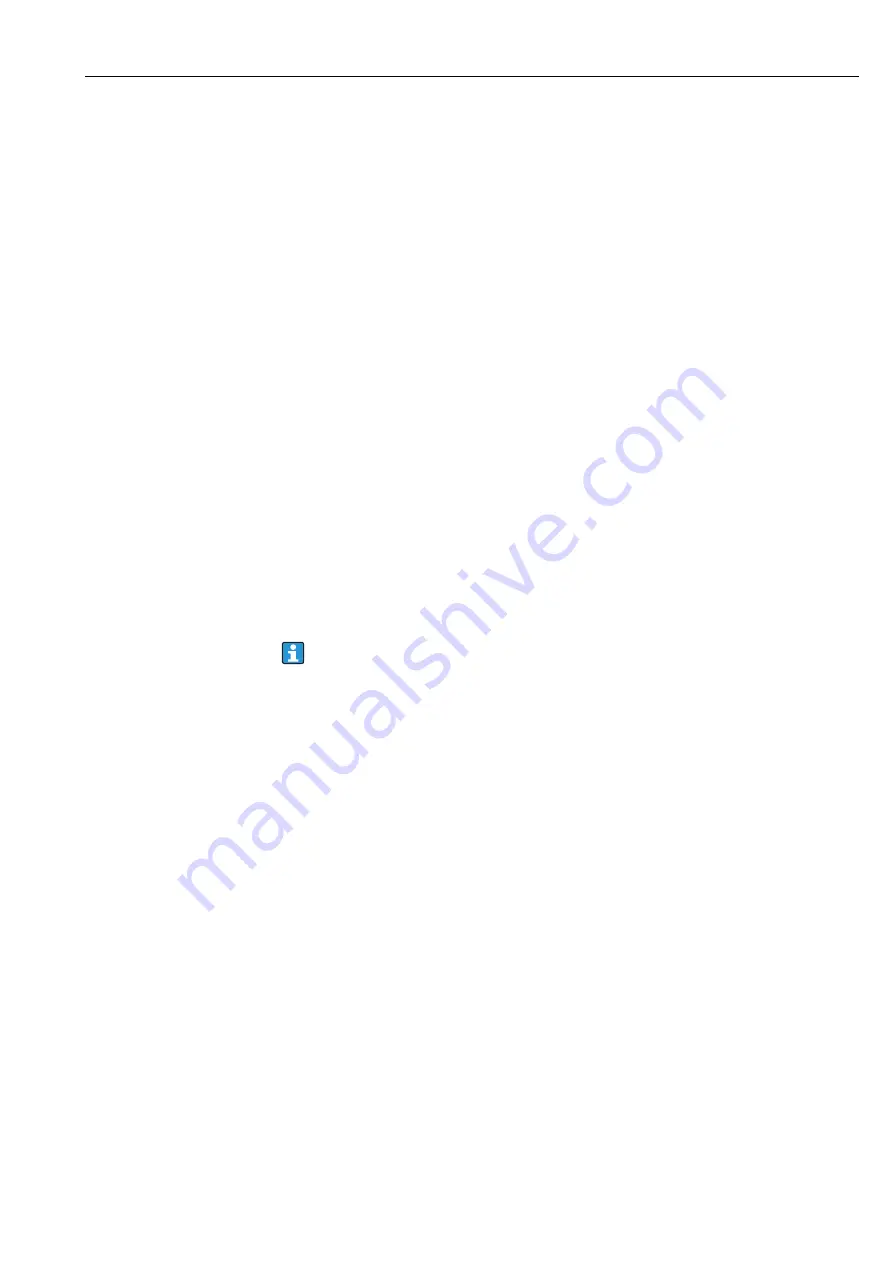
Nanomass Gas Density
Operation
Hauser
49
4. Press the "Select" button.
A window opens where you can select where the file should be saved.
5. Select the desired storage location. You can choose from the following options:
– If you selected "Create new file" previously, select the desired storage location for the
new file.
– If you selected "Extend existing file" previously, select the existing file to which real-
time measuring data are to be added.
– If you selected "Overwrite existing file" previously, select the existing file which should
be overwritten.
6. Press the "Create file" button to confirm your choice.
The selected storage location is displayed in the "Record Data" window.
7. If necessary, enter a preferred comment for the file header in the "Comment header"
input box.
8. If necessary, enter a preferred comment for every line of measured data in the file in the
"Comment each" input box.
9. Press "Start" to start recording.
Real-time measuring data are written to the selected file.
In the measured value display area, a red signal appears to the right of the measured
variable that is being recorded.
11.4.3 Stopping recording
‣
Press the "Stop realtime recording" button.
The device stops recording real-time measuring data.
11.4.4 Displaying real-time measuring data in graphs
You can add additional measured variables while graphing is in progress by simply
ticking the appropriate check boxes.
1. In the "Graph" section, select the measured variable to be displayed in graph format.
2. Press the "Start graphing" button.
Real-time measuring data for the selected measured variable are shown in graph
format.
11.4.5 Stopping graphing
‣
Press the "Stop graphing" button.
Graphing is stopped.
11.4.6 Clearing graphs
‣
Press the "Clear graph" button.
All graphs are cleared.
11.4.7 Scaling the Y-axis on the graph
1. Click the "Autoscale" button to switch off the autoscale function.
Note: The autoscale function is switched off if the button is no longer blue and "OFF" is
displayed.
2. Select the "Manual Y axis adjust" function by clicking the "Range" option.
3. Left-click the desired Y-axis, press and hold, and then drag.
The Y-axis is scaled.






























